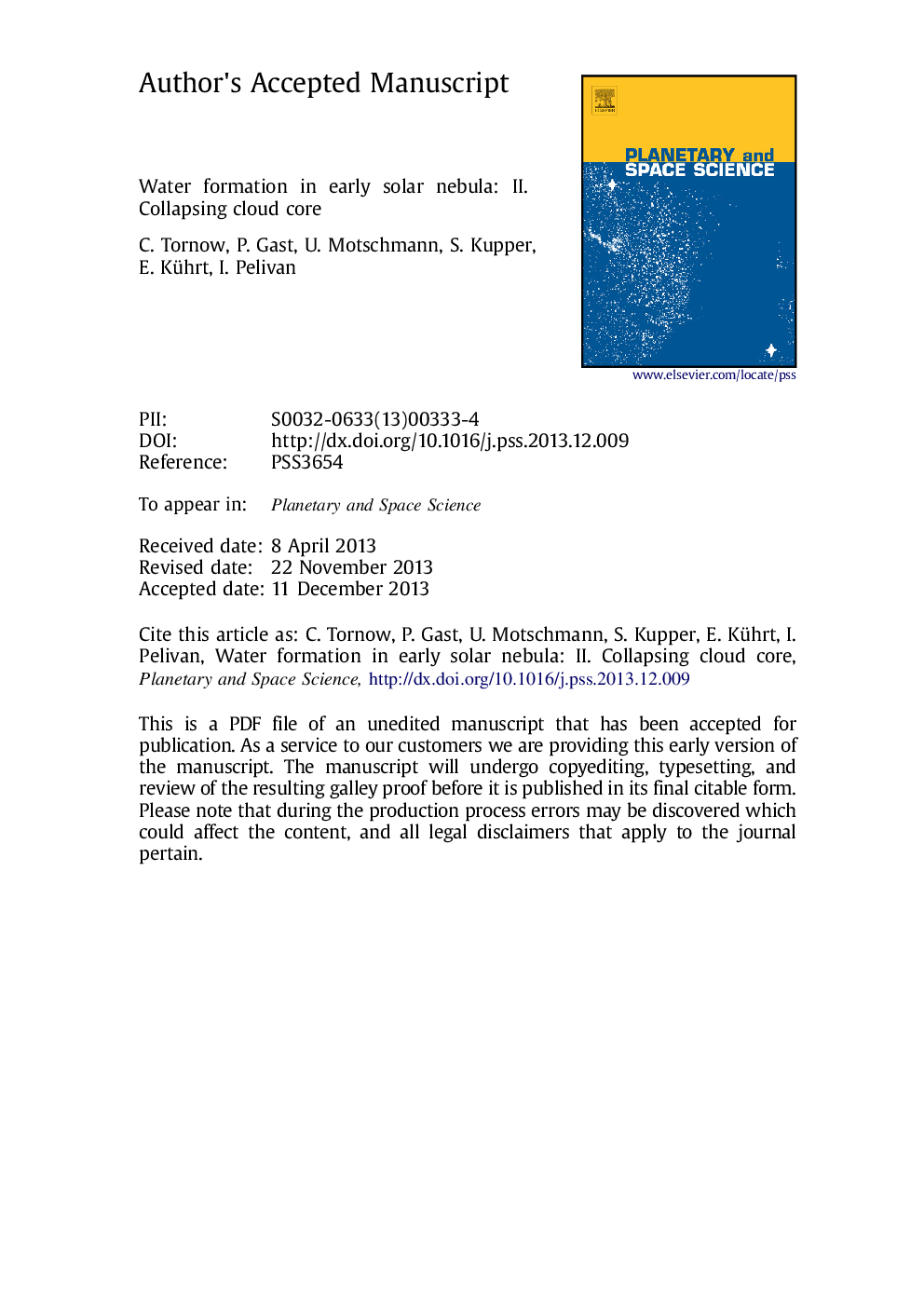| Article ID | Journal | Published Year | Pages | File Type |
|---|---|---|---|---|
| 8143762 | Planetary and Space Science | 2014 | 52 Pages |
Abstract
The formation of water is a repetitive process and depends on the physical conditions in the different stages of the solar nebula and early solar system. Our solar nebula model considers the thermal and chemical evolution of a collapsing globular cloud core. We simulate the collapse with a semi-analytical model which is based on a multi-zone density distribution. This model describes the formation of a central protostellar object surrounded by a disk and a thin outer envelope. It considers an adiabatic equation of state, viscous gas flow and a resistive magnetic field. Due to the low temperatures in the hydrostatic stage of the core, icy layers of water mixed with other molecules build on the dust grains. In the course of the collapse the ice sublimates and drives a complex chemical evolution located in a warm region around the proto-stellar object called hot corino. Moreover, the relatively high temperatures in this region allow the gas phase formation of water together with other molecules. The abundances of the chemical compounds are computed from rate equations solved in a Lagrangian grid. We can show that there was high water density in the early and late accretion zone of the Earth. This water was sublimated from the dust or formed by hot neutral reactions in the gas phase. Thus, according to our collapse model, there were two sources delivering the water incorporated into the Earth.
Keywords
Related Topics
Physical Sciences and Engineering
Earth and Planetary Sciences
Geophysics
Authors
C. Tornow, P. Gast, U. Motschmann, S. Kupper, E. Kührt, I. Pelivan,
